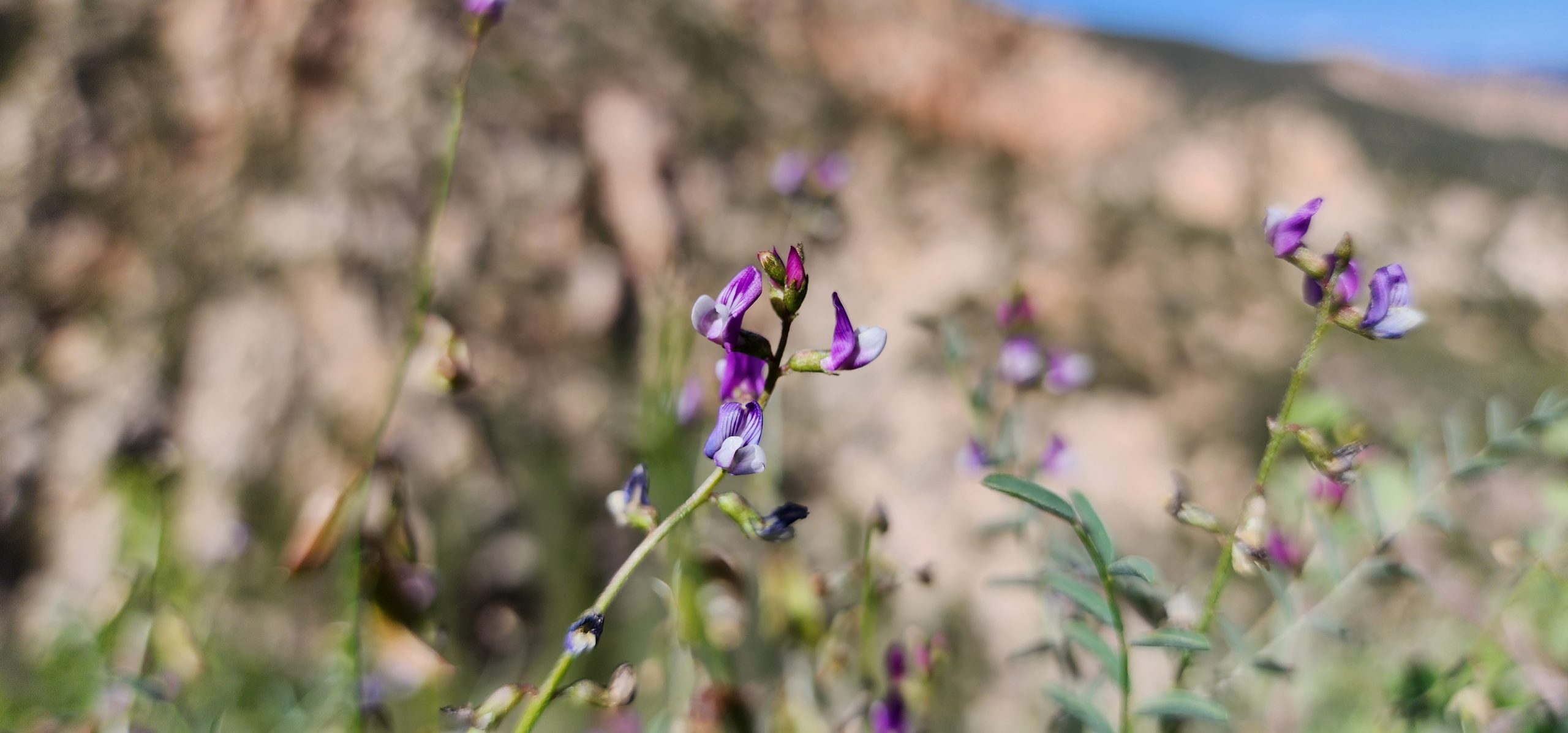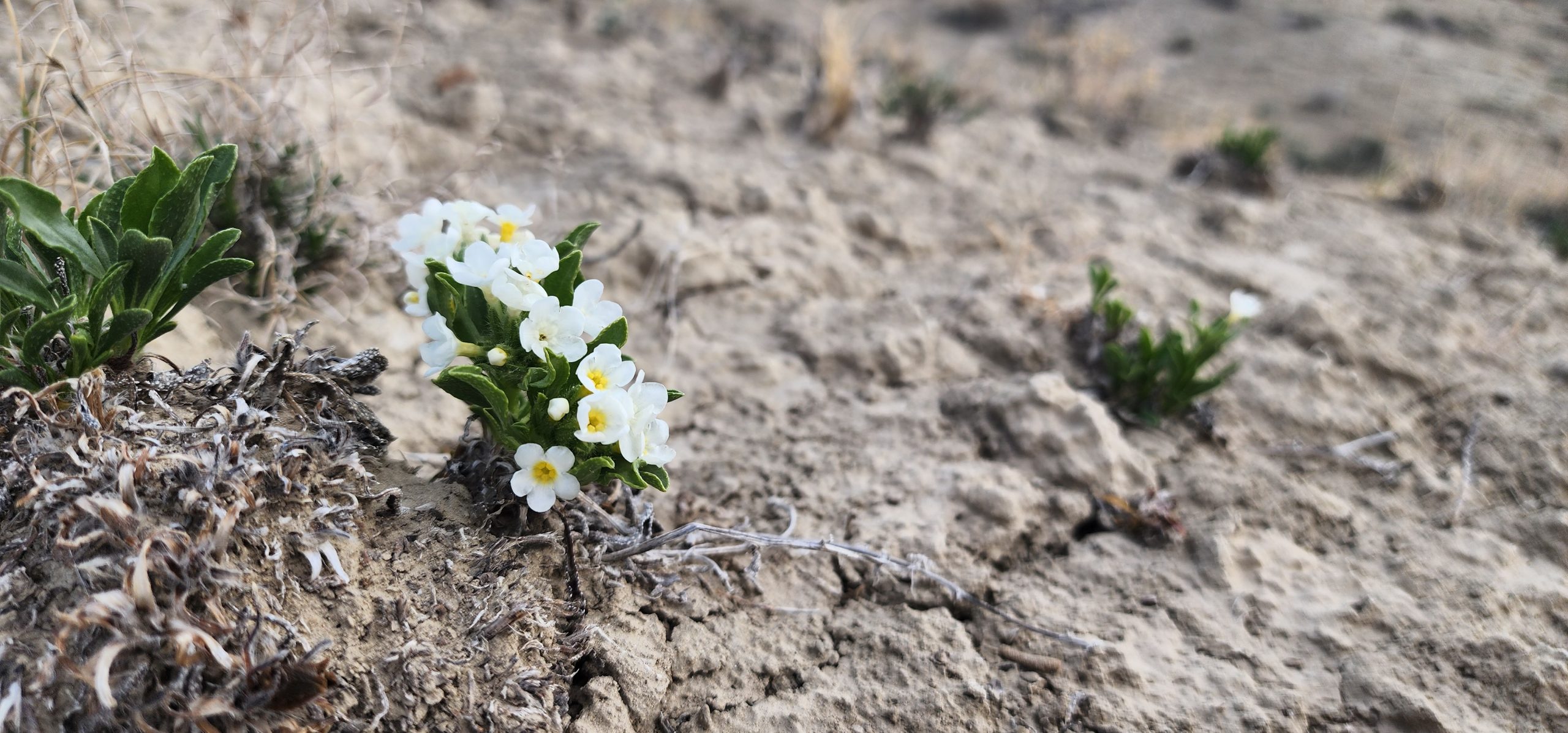Save Plants
CENTER FOR PLANT CONSERVATION
January 2020 Newsletter
I like to think of 2020 as the Year of Clear Vision. This month’s newsletter exemplifies that vision for plant conservation. It began with the great idea of the California Biodiversity Initiative, starting with a clear vision, but also the hard work and strategy of dedicated individuals working with the California Native Plant Society (CNPS). To CNPS, we would like to express our most sincere admiration for helping to actualize this Initiative. To visionary legislators, we would like to express our most sincere thanks for taking this idea through the legislative process. To the botanic community in California, we congratulate all for speaking up for plants! To our land manager partners, we look forward to working with you to help conserve the rarest plant species in the state.
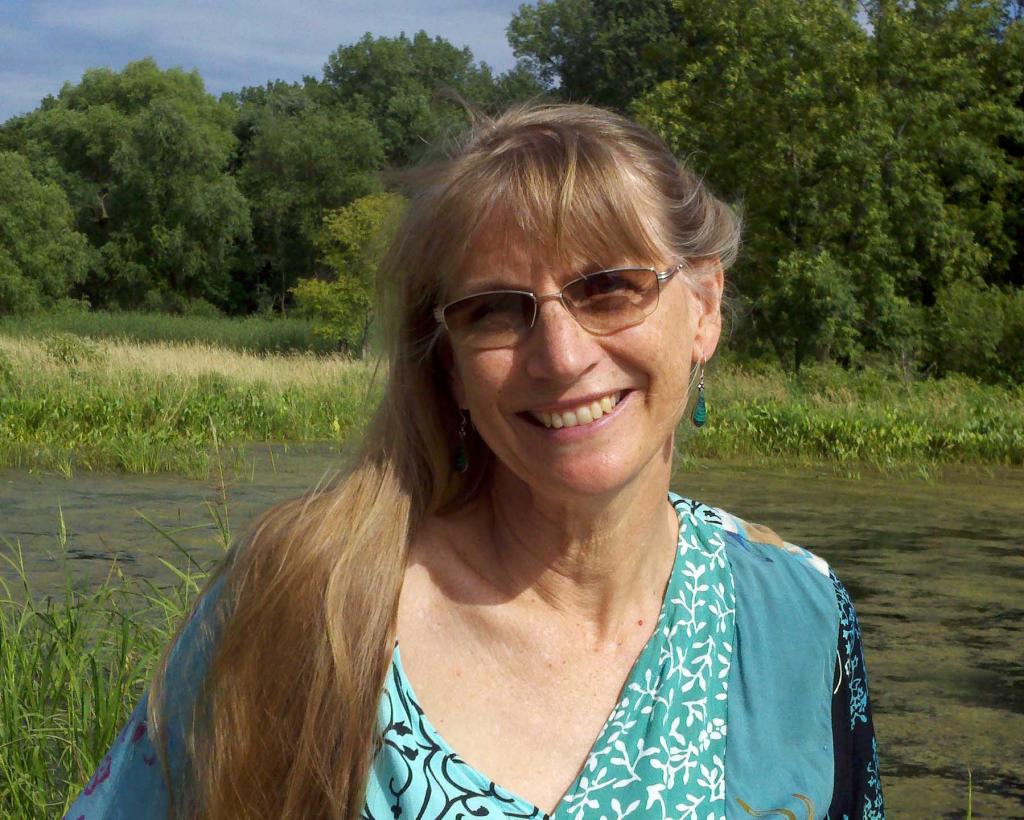
Joyce Maschinski
CPC President & CEOUnique Funding Opportunity to Bank California’s Flora
Seed banking is a powerful tool against extinction. Living individuals are kept as insurance against extinction in wild as individual seeds can be used to reintroduce the plants in the face of catastrophic loss. Seed is also available for research that can help with the recovery of a threatened species or help us understand the needs of a naturally rare species.
In June, the ink was drying on Governor Gavin Newsom’s signature passing the California Budget Act of 2019. Not terribly different from past state budgets to most eyes, this year’s budget contained something new and exciting for biodiversity in the state, especially rare plants. The budget specifically spelled out that over the next five years, $3.2 million dollars would be allotted to support the seed collection of rare plants, and enhance the facilities and databases needed to maintain these collections. And the funding would be directed through CPC to the established network of seed banks and collectors in the state – California Plant Rescue, or CaPR.
Five years ago, CaPR formed to address a gap in rare plant seed collections (see our September Newsletter). Though seed banking had been a part of the CPC institution’s conservation programs for decades, back in 2014 only 30% of the state’s recognized rare, threatened or endangered taxa were secure in seed collections. Through increased communication and cooperation with CaPR, and a focus on collecting the rarest taxa, that number increased to 44% in just four collecting seasons, and, when considering living collections at the gardens, we are even closer to the Convention on Biodiversity goal of securing 75% of the most threatened taxa in ex situ collections by 2020. Reaching the goal was in sight, but difficult to work towards without guaranteed funding to cover collecting and processing expenses. The funding from the state’s budget changed that, and made the goal suddenly very achievable.
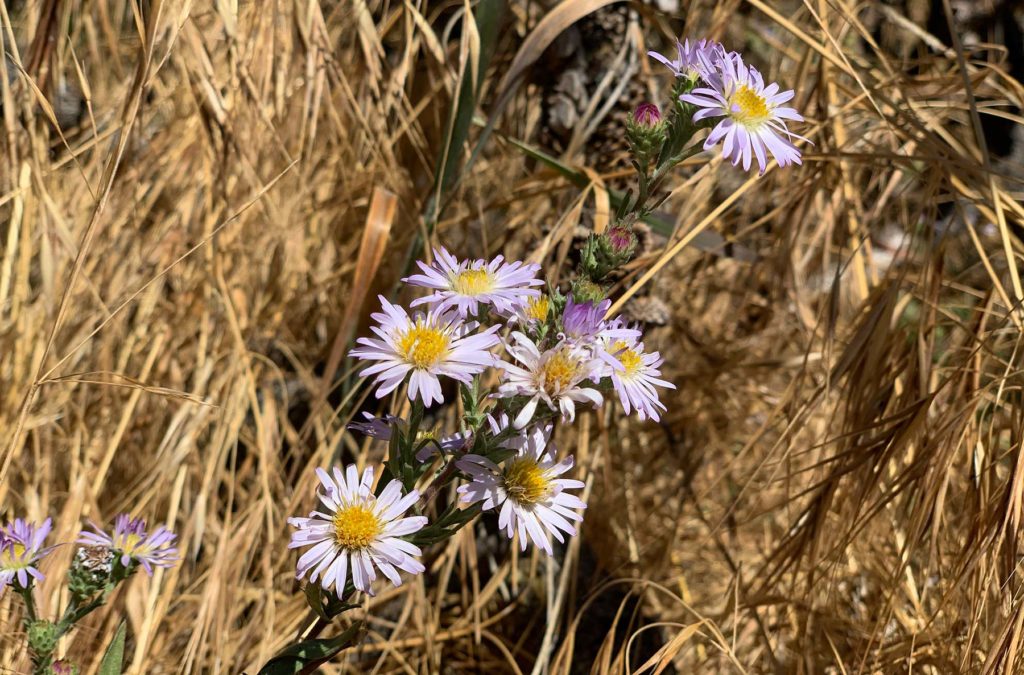
For 2020, many of the CaPR partners are making adjustments to their conservation programs to make a big push for the 2020 Convention on Biodiversity goals. The group needs to secure collections from 156 taxa to meet this goal, a number that would have seemed impossible before the state funding. Blessed with both a funding source and an above-average rain year spurring seed production, CaPR institutions were able to triple the amount of new, unique taxa added to seed banks that they had been averaging since 2014. And the partners hadn’t even had the time to adjust their collection plans and permitting process to fully take advantage of the funding source.
However, CaPR will not stop there. The funding will cover collections through the 2024 season and will provide enough funds to support over 1,000 rare plant collections. Continuing to prioritize the rarest, the group hopes to make huge progress towards collecting all the highest ranked taxa with bankable seed and make progress towards other rare taxa as well. With over 2,500 plants ranked as rare to some degree, there is no shortage of need.
The state funding will also help the group address gaps and biases in our collections in various ways. When funding is only guaranteed for a handful of collections, collectors are more likely to seek the ‘safer’ collections, those they know they can make. The large amount of guaranteed funding allows the collectors to put together plans that allow them to strive for ‘riskier’ taxa – those that might not produce seed, are hard to get to, or whose populations haven’t been surveyed recently – and balancing those with some safer targets. The group is also coming together to plan expeditions to the far corners of the state, those far from any one of the established seed banks, but rich in threatened and rare species. And finally, the five-year window of the funding will help collect those species that are fire followers, or just don’t produce seed every year, and hedge our bets against drought conditions.
While the tasks ahead, to collect the rare flora of California, will still be challenging, the CaPR group feels well-positioned to tackle the challenges. The state’s commitment to conserving biodiversity is an investment that will be paid in dividends.
Aware, Ready, and Constantly Working To Protect Biodiversity
Based on information provided by Greg Suba, former Conservation Program Director
It is by no means unusual for special projects to get funding directly through line items in a budget act. It happens on the state and federal level for every budget passed, though it is new to CPC, who will be disbursing funds on behalf of California Plant Rescue (CaPR) from the state of California. For CPC, procuring the funds legislated for seed banking California’s rarest plants was fairly straightforward because the work getting it into the legislation had been accomplished already. The California Native Plant Society’s (CNPS) staff and contracted lobbyists put in the time well before the governor’s pen met paper finalizing the funding, and it is their work, awareness of the capital’s goings-on and workings that helped all the CaPR partners conserve the state’s rare flora.
CNPS was a leader in outlining the California Biodiversity Initiative, which the seed banking funds support. The initiative was developed under Governor Brown in his second term and is an aspirational initiative to protect the valuable and unique biodiversity of the state. The Initiative has several broad goals, including preserving native species, protecting and restoring all types of California ecosystems, and improving ecosystem functions. Many scientists and conservationists came together to design a roadmap that would help implement these lofty goals. However, the specific projects won’t happen unless funded by the state or private philanthropy. Establishing the Initiative as policy was just step one; follow-up steps including procuring funding, were always part of the plan.
The Biodiversity Initiative has exciting implications for government agencies as well as nonprofits. The California Natural Resources Agency, California Department of Food and Agriculture (CDFA), and Department of Fish and Wildlife are all important to the initiative. And the agencies get the first pass at impacting the budget by submitting Budget Change Proposals to the governor’s office. The governor builds a budget proposal with these submissions, and other things, in mind. The draft goes to the legislators and is adjusted. In the fall of 2019, CDFA submitted a budget change proposal to explore the establishment of a seed-banking network. CNPS’s lobbyists, Alfredo Arredondo and Jaymee Go of Priority Strategies, Inc., learned of the submission and worked with CNPS to convince the CDFA that the existence of CaPR meant that a network was already established, and no exploration was needed.
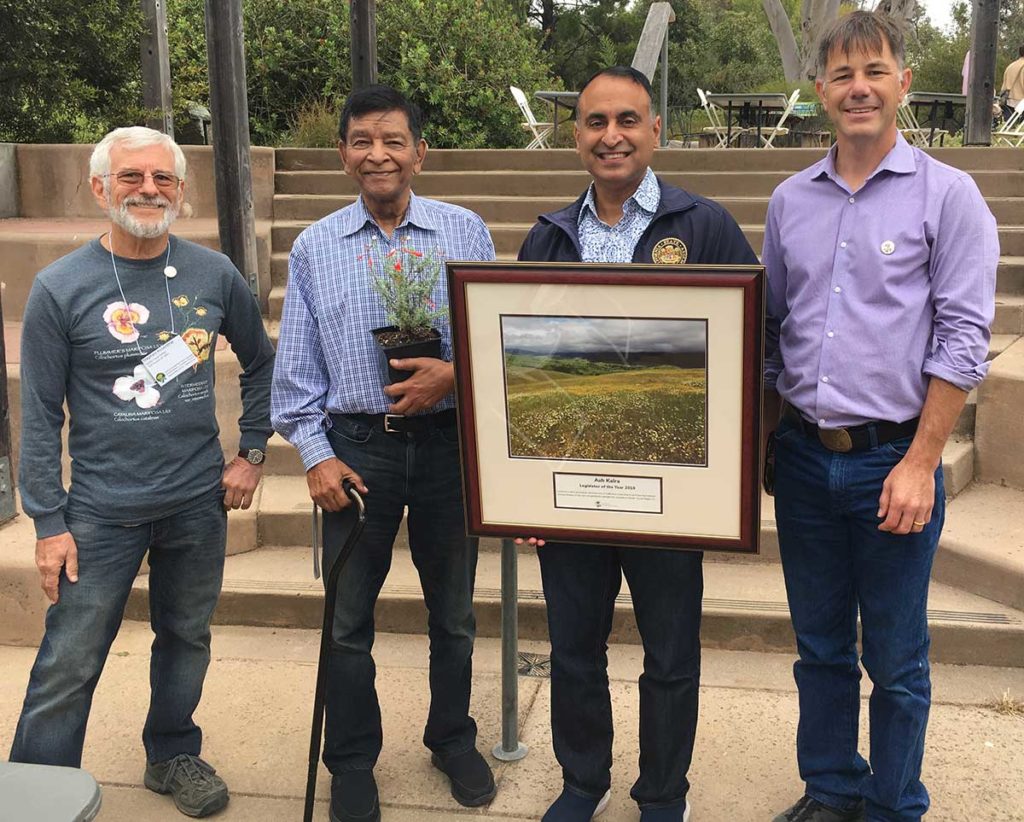
This sparked the idea of seeking funding to support the existing network. CDFA had already made the case that seed banking was a good idea worthy of budget appropriations. Alfredo and Jaymee prepared a short list of strong, visionary environmental leaders in the Assembly and Senate, with Assemblymember Ash Kalra, representing the San Jose area of California, rising to the top of the list. As a relatively new member of the legislature wanting to establish his environmental credibility, his office had already put out feelers that he was interested in addressing biodiversity preservation following the release of the UN’s report on biodiversity. The timing was lucky: just as CNPS was looking for a sponsor, Asm. Kalra was inspired to address the biodiversity crisis.
Besides the lobbyists, Director of Conservation Greg Suba and Executive Director Dan Glusenkamp were involved in speaking to the assembly member about their biodiversity recommendations. Throughout the conversations with Asm. Kalra, the CNPS team made sure to let Secretary Ross of the CDFA, as well as the leaders of CDFW and the Natural Resources Agency, know about the funding proposal. Once the budget items were proposed, the team turned to lobbying support from other budget committee team members in the assembly and the senate, as well as the governor’s office, with some grassroots work thrown in to encourage the legislator’s help.
Advocating for plants is something all plant conservationists do in some way – someone needs to advocate for the botanical wonders hiding in plain sight. The timing of the dire UN report presented a great opportunity for CNPS to take advantage of the buzz around biodiversity. That they were aware of the different budget issues floating around the state capital allowed them to turn an exploratory budget request from an agency into funding action. CNPS plans to keep working with the state on implementing the Biodiversity Initiative, working with both state agencies and the legislature to make sure the state is doing everything possible to conserve California’s rich biodiversity.
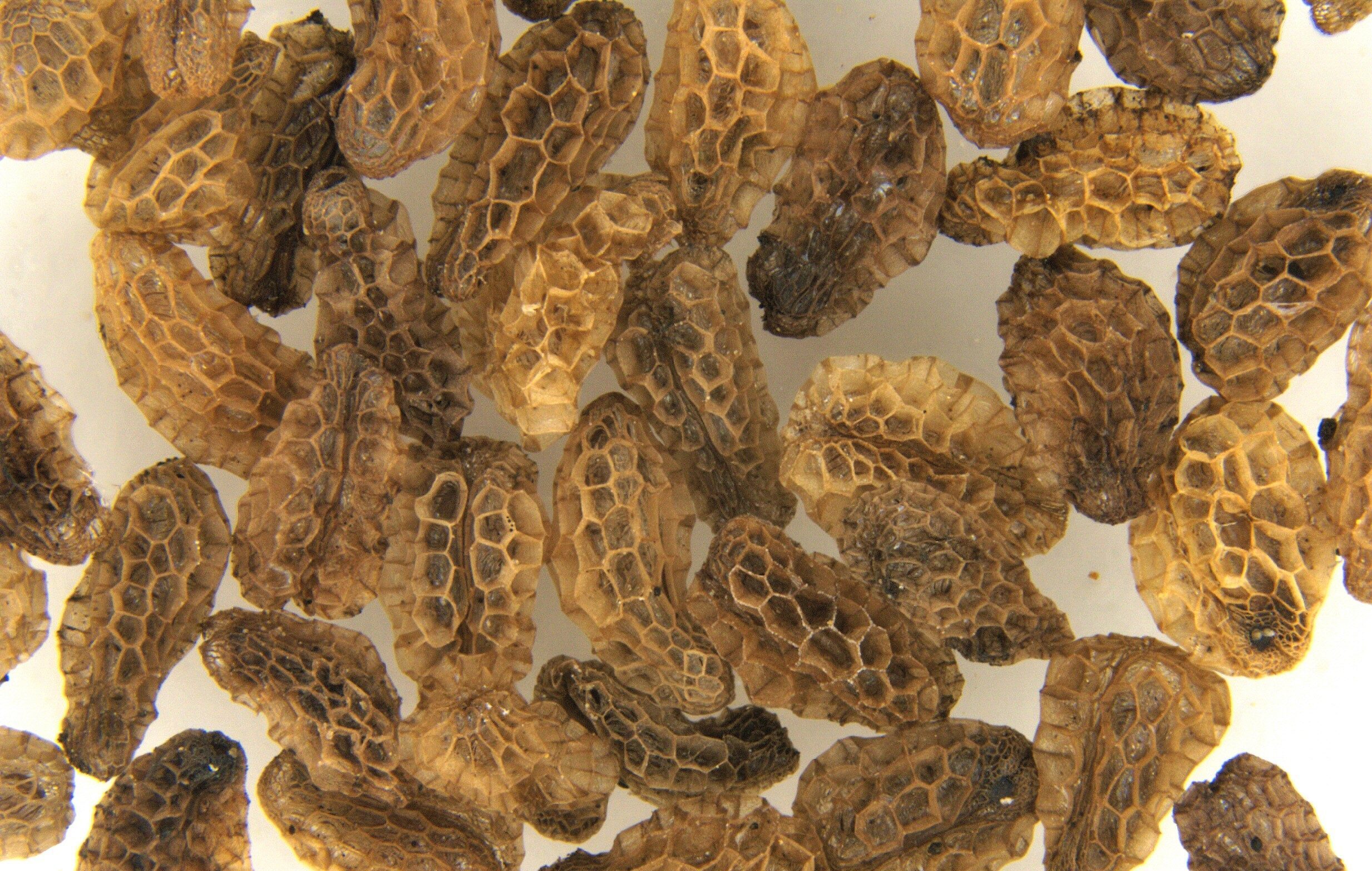
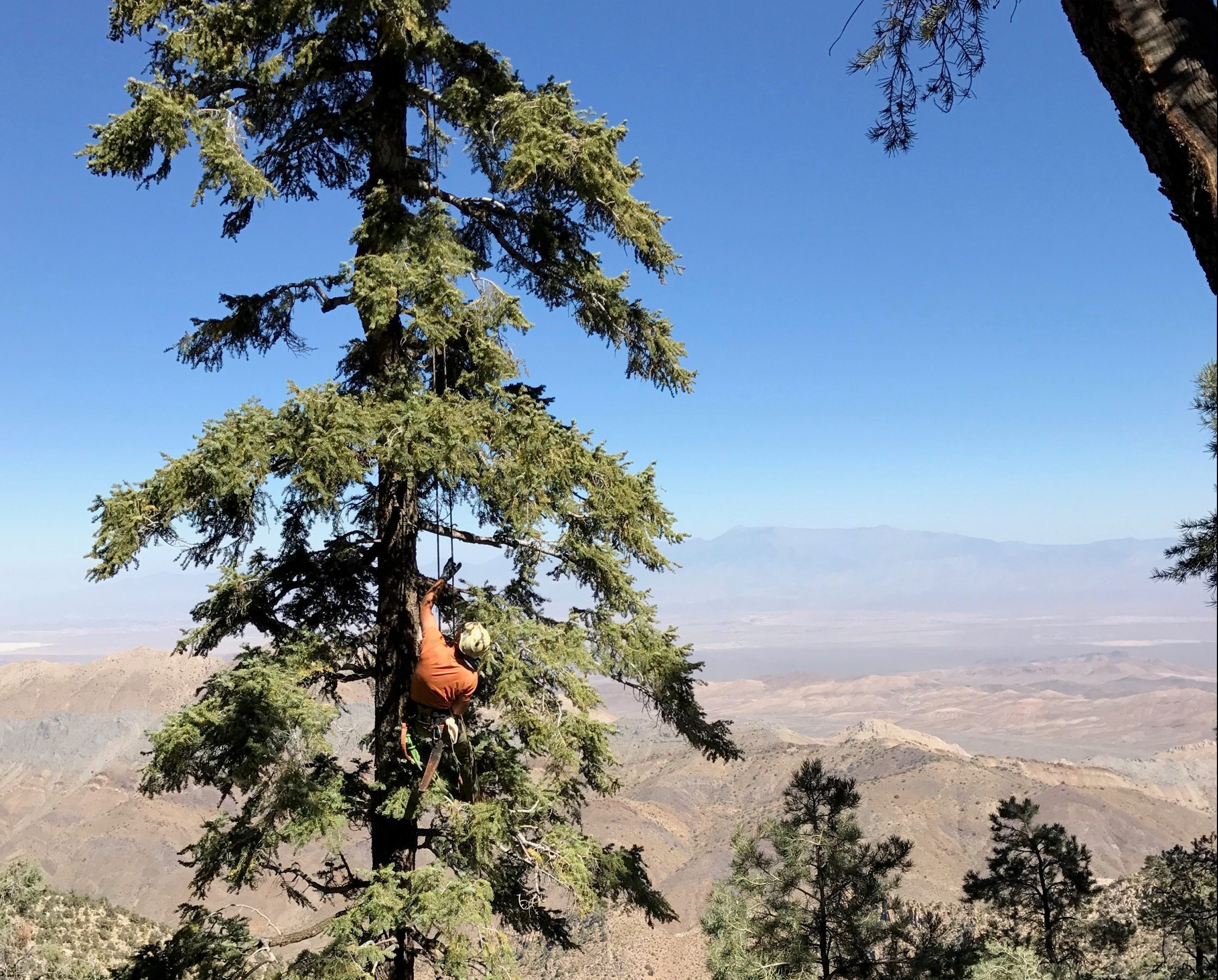
Connecting People to People to Save Plants
In early May of 2019, the UN released a report with grim news for biodiversity on earth: over 1 million plants and animals around the world are threatened with extinction. The dire news got attention, including from legislators in the California State Assembly, where the California Native Plant Society (CNPS) had been working to find funding for the state’s biodiversity initiative, and specifically funding for rare plant seed collections. Noticing the attention the report received, CNPS’s lobbyist, Alfredo Arredondo, saw opportunity. He advised CNPS that the heightened awareness of extinction meant it was time to push seed banking as an alternative to extinction. It was time for a grassroots campaign.
As senior director of communications and engagement, the grassroots campaign largely fell to Liv O’Keeffe’s team. The goal of the grassroots campaign was to help the legislators connect the dots between their interest in addressing the looming extinction crisis and funding seed banking. The campaign would target legislators key in getting the requested line items approved – budget committee members.
In TV and movies, an official may receive bags and bags of letters just as a decision needs to be made. These bags are easy short-hand for depicting the opinion of the public – they can show that the world outside a courtroom believes in Santa Claus or that his constituents think Mr. Smith should leave Washington. But in the real-world of auto-generated postcards and emails, bags stuffed with letters don’t always do the trick. With this in mind, Liv’s team opted for a highly targeted personal appeal instead of a mass campaign. In the hours leading up to the budget hearings, CNPS staff reached out one by one to specific CNPS members to request their help on a human scale.
And these personal appeals from everyday constituents worked. Mr. Arredondo reported back that assembly members and their staff would comment on the messages they received, the real people they had heard from. Human to human interaction worked on two fronts: not just between the CNPS member and their assembly person, but between CNPS staff person and CNPS member, to spark the action. In reaching out to CNPS members active in their chapters and living in the targeted assembly person’s district, CNPS staff showed the members that their specific support was needed. While it might be easy for someone to ignore a blanket request sent to thousands of people, and even the most active members might be numb to the plethora of requests to action from grassroots organizations, a personal request engages the member and makes it more likely that person will respond.
Which CNPS members did the CNPS team turn to? The ones they knew would take action based on past behavior. CNPS has a broad membership, ranging from artists, gardeners, professional botanists, nature lovers, and more. No one type is more likely to take action than another, but leaders have stepped up in each chapter. Drawing on established relationships with CNPS volunteers and allies, Liv’s team was able to identify active CNPS members living in districts represented by the California State Assembly budget committee members. They weren’t necessarily experts in the field of California native plants or conservation, but they were able to share real stories about the importance of California’s flora to them, and that is what the assembly members responded to.
Another tactic of the grassroots campaign for securing seed banking funding was to utilize more of a ‘bags of letters’ approach. But its purpose was a bit different than the personal appeals. CNPS used social media, especially Twitter and Instagram, to tag and encourage the legislators as they took steps to support the effort each step of the process – an important way to let them know that its thousands of members are watching and supporting the seed banking efforts. On the International Day for Biological Diversity, CNPS and other partners in California Plant Rescue (CaPR) partnered in a social media frenzy, posting on Twitter, Facebook, and Instagram, drawing attention to saving biodiversity through seed banking as the counter to extinction and giving the legislators accolades for their advocacy.
Further accolades will come as the legislators’ desire to prevent extinction comes to pass. CaPR partners are making a big seed banking push and hope to make great progress in conserving California’s rare plants.
Legislative Leaders

Assembly Member Ash Kalra introduced the seed banking budget appropriations in support of the California Biodiversity Initiative. Kalra and his team had been looking for a way to address the biodiversity extinction crisis when they were approached by CNPS. In building that relationship, CNPS found their seed champion in the assembly member representing the 27th District encompassing parts of San Jose, CA.
Assembly Members Kevin McCarty, Philip Ting (Budget Committee chair), and Shirley Weber, all on the Budget Committee, provided support for the seed banking budget request as it made its way through the committee.
In the Senate, Chair Holly Mitchell and Nancy Skinner helped the request make it into the state budget.
And finally, Governor Gavin Newsom and his staff provided support at various phases of the budgeting process and signed the final budget into law.

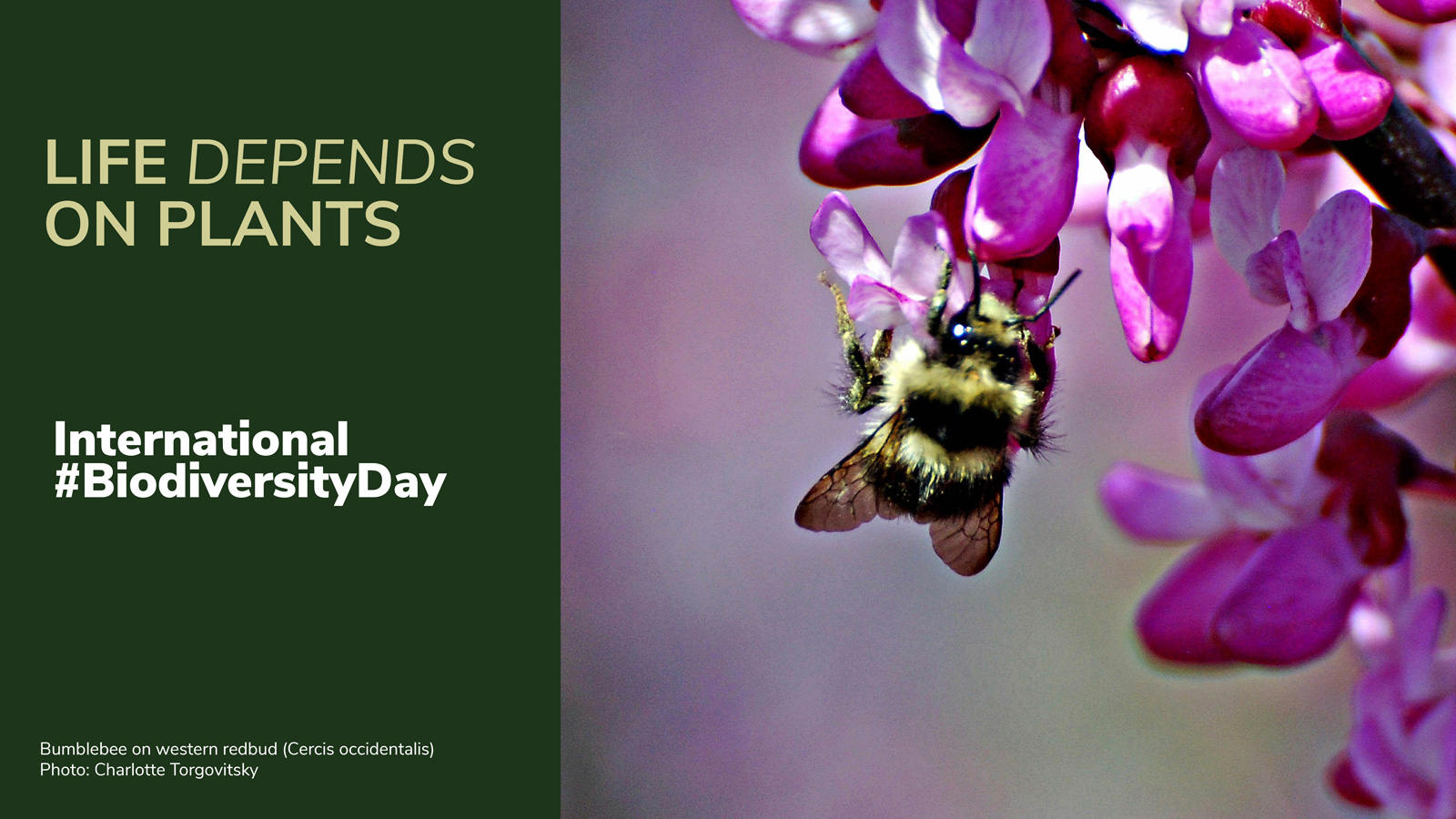
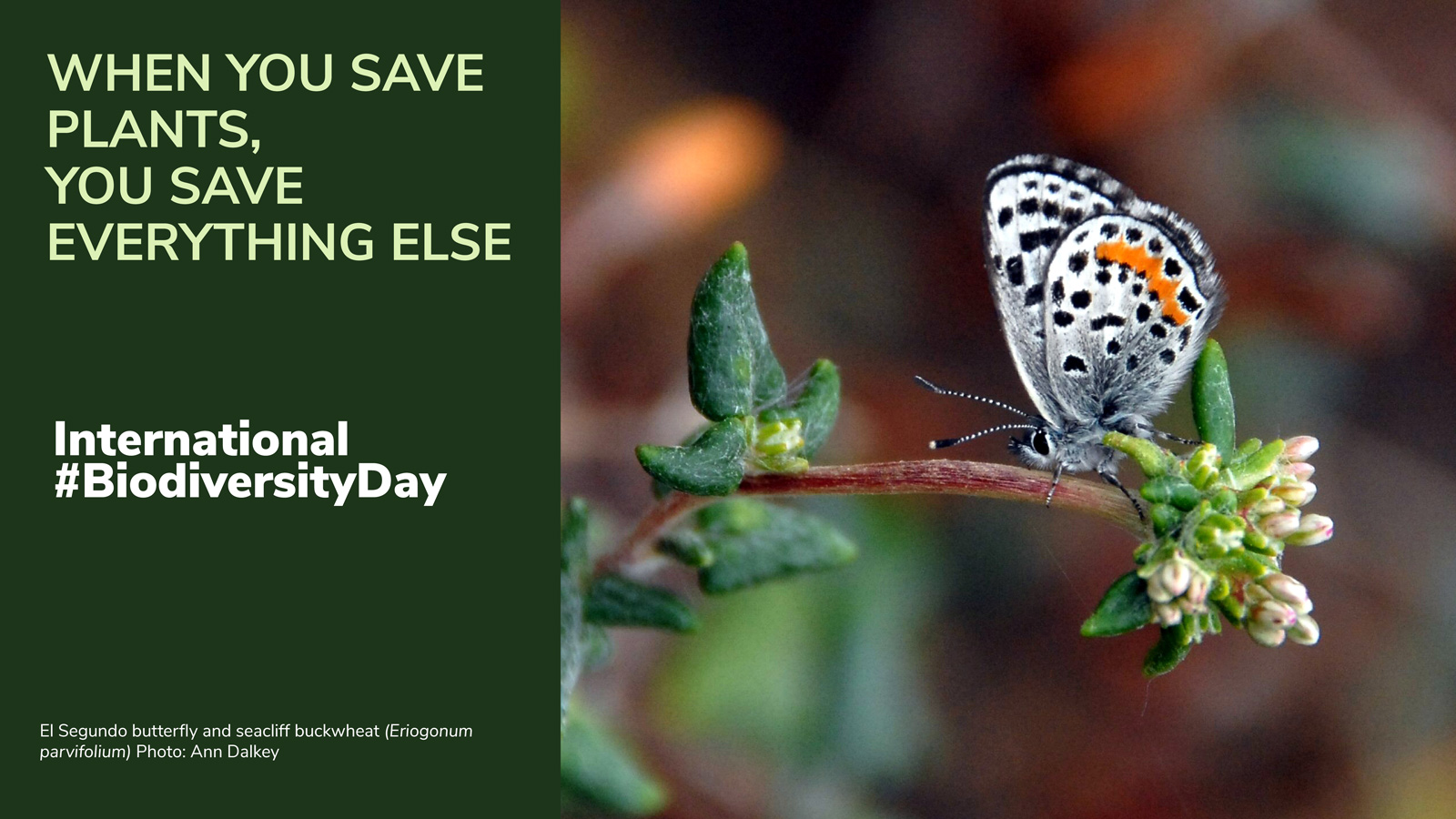
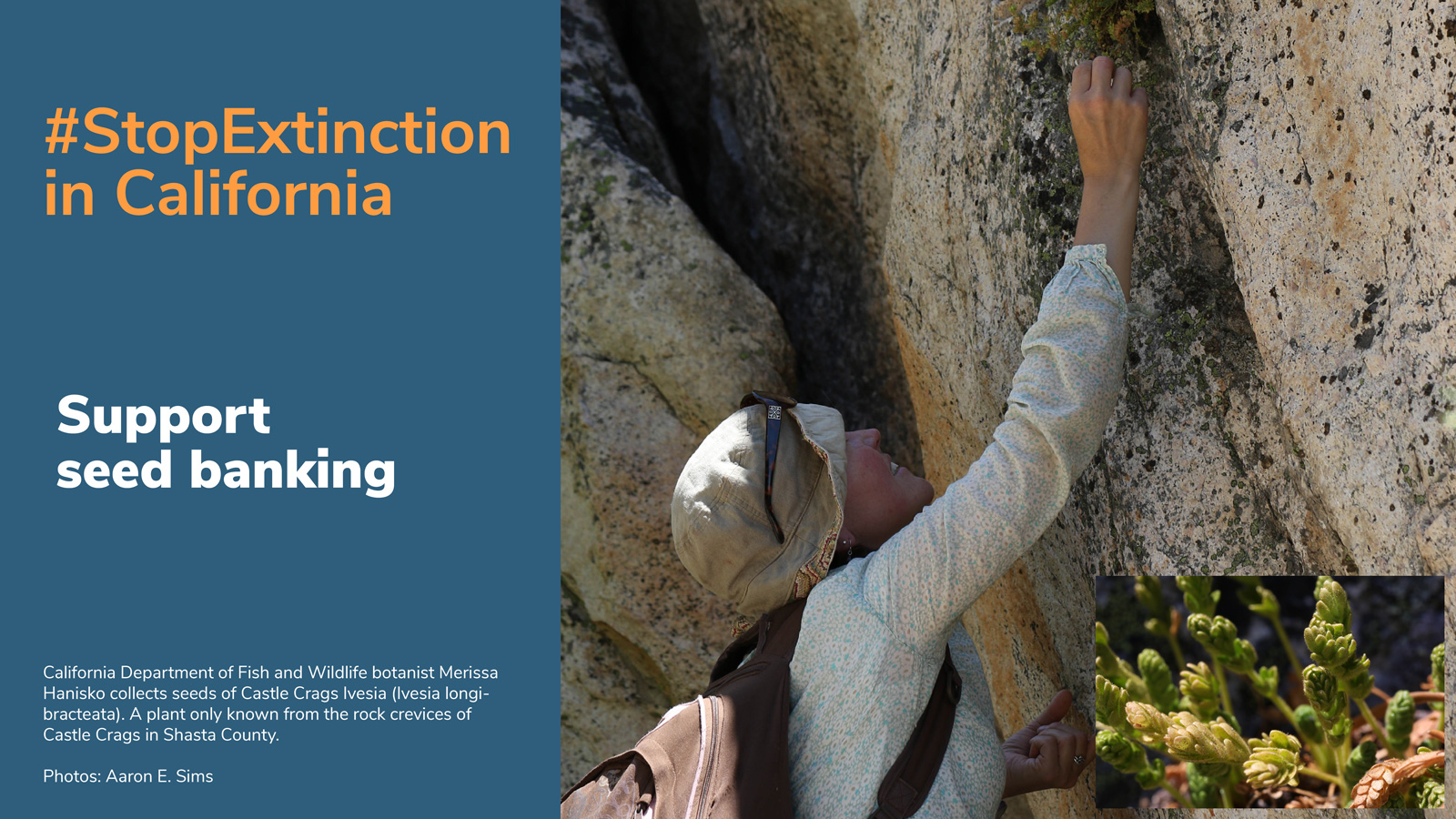
Importance of Partnerships
The institutions of California Plant Rescue (CaPR) have made great progress in conserving the rare flora of California, largely with both the financial support and collaboration of public lands managers. Though the state’s funding will help immensely with the financial aspect of seed banking, collaboration will still be key to not only obtain permissions for collecting the needed seed, but also for ensuring the botanical institutions are working toward meeting collaborator needs and that both the land managers and seed collectors’ expertise are leveraged effectively.
Two entities in particular are key to both past and future CaPR successes: the Bureau of Land Management (BLM) and the U.S. Forest Service (USFS). The BLM has been a key partner with their Seeds of Success program to collect, conserve, and develop native plant materials for restoration across the U.S. for many CPC participating institutions, including several CaPR members. These members also partner to collect BLM sensitive species. Christina Lund, the BLM state botanist, is working with the botanists at field offices and CaPR partners to bank seed from rare plants occurring on BLM lands – hoping to have all the rare species collected from populations on their lands soon. It is of no surprise then, that BLM has a high proportion of its rare taxa collected from BLM lands.
The USFS lands in California are rich with rare plant occurrences, as they tend to be well botanized. In fact, 26% of California’s recorded rare plant populations, as recorded in by the state’s natural heritage program (California Natural Diversity Database) are on USFS lands. The amount of seed collections on any individual national forest depends on the strength of collaboration between the management of the forest and a CaPR partner. For instance, National Forests in the far north of the state are far from any of the collaborators and have few taxa collected. Meanwhile, San Bernardino National Forest, located a short drive from Rancho Santa Ana Botanic Garden and a regular partner with them, has 76% of their rarest species banked, 43% from the forest’s populations. Working with individual forests throughout the state will be instrumental in CaPR achieving its conservation goals.
As CaPR partners strive to conserve all the rare plant taxa in California in banked seed collections, it will be important for them to keep in mind the current and future needs of our land managing partners as well. As such, CaPR partners plan to continue to work with their established partners and build relationships with new partners as well. From local governments to state and federal agencies, special districts to non-profits, the seed that is being banked will benefit all who strive to protect rare plants on their lands.
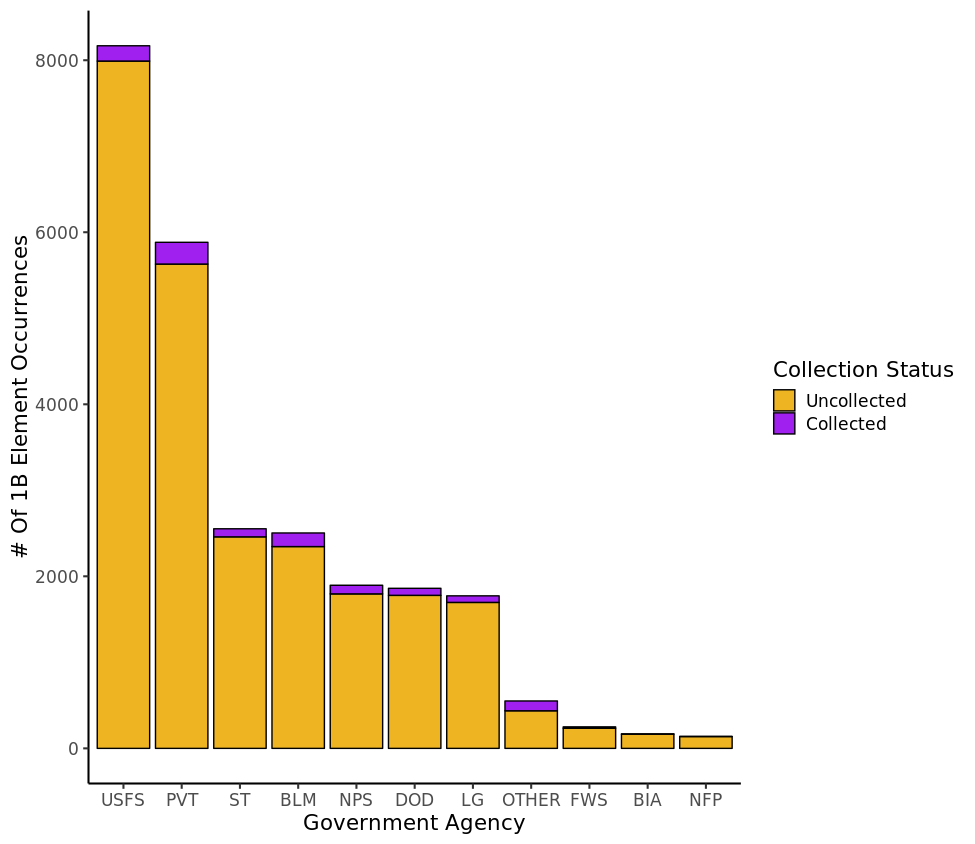
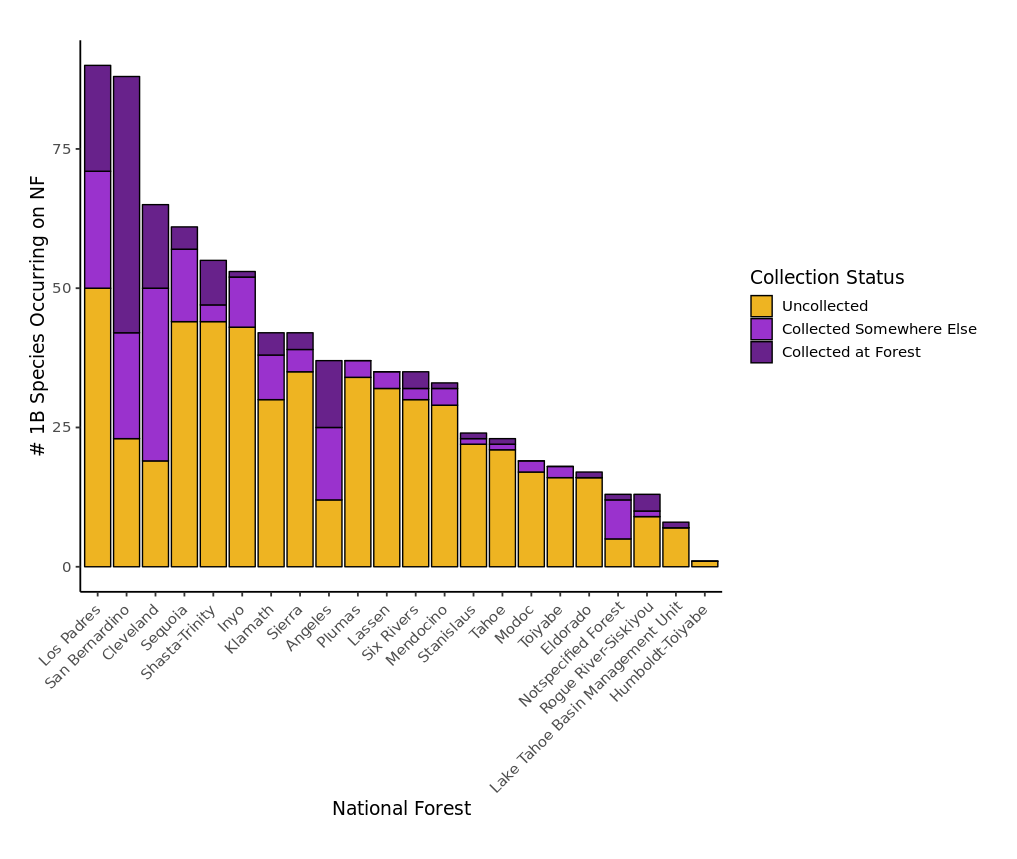
-
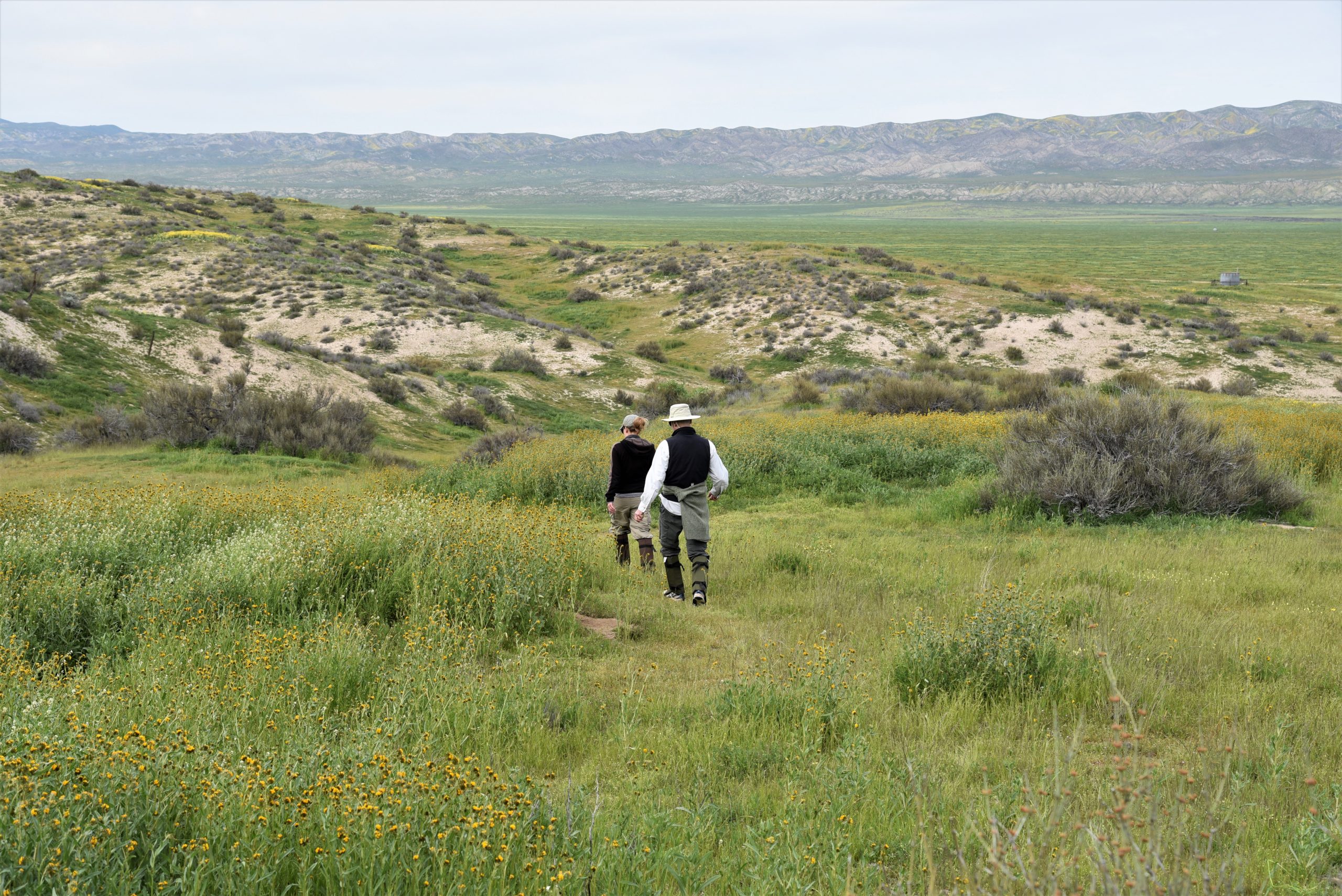
Botanists from Santa Barbara Botanic Garden , a CaPR partner and CPC Participating Institution, head into the field to conduct surveys for rare plant species in California. Photo credit: A. Hernandez, courtesy of Santa Barbara Botanic Garden. -
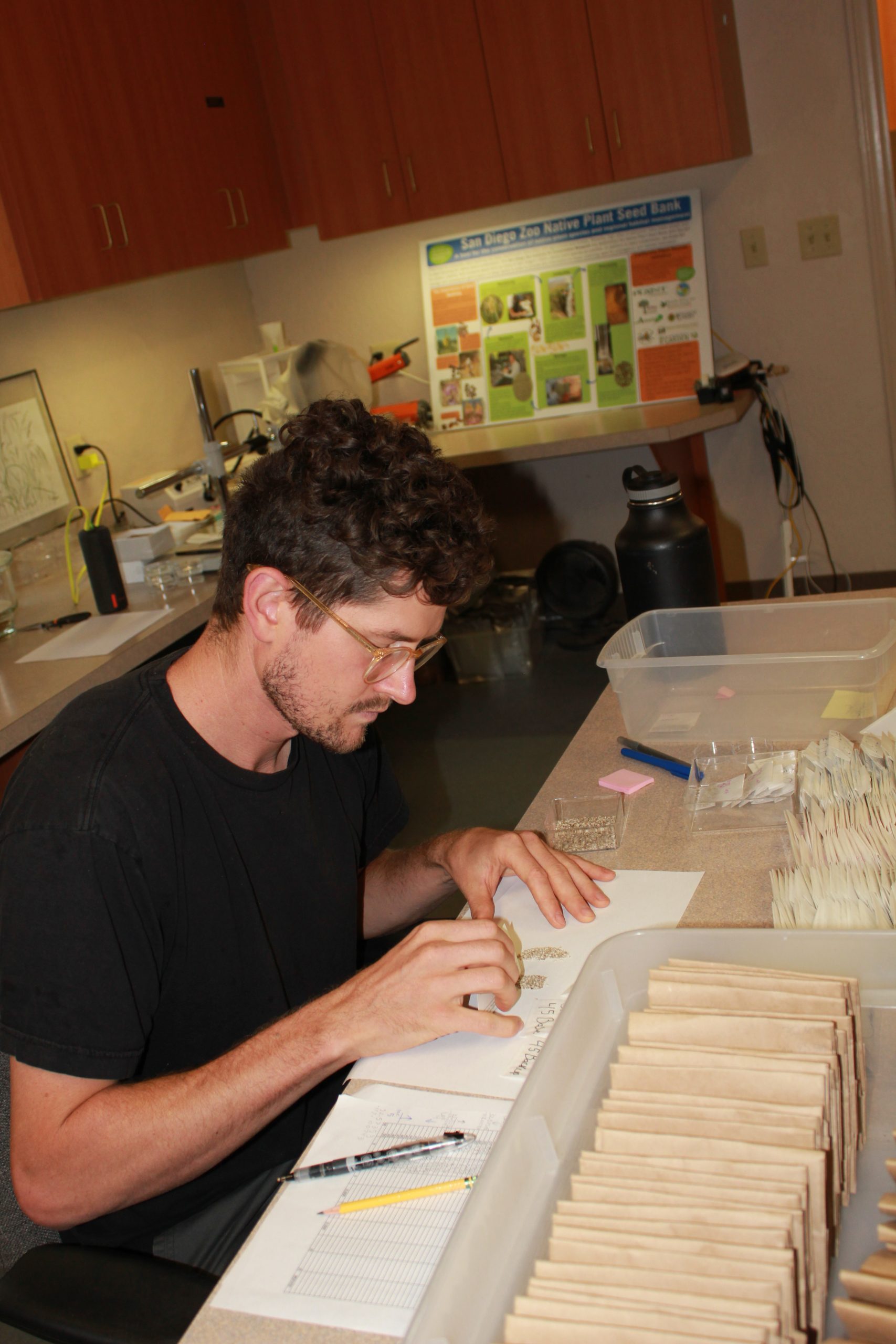
Tobin Weatherson of the Native Plant Seed Bank at the San Diego Zoo sorts through seed collected by maternal line, as each of the rare plant seed collections being support by the Biodiversity Initiative funding will be. Photo credit: Joyce Maschinski, Center for Plant Conservation. -
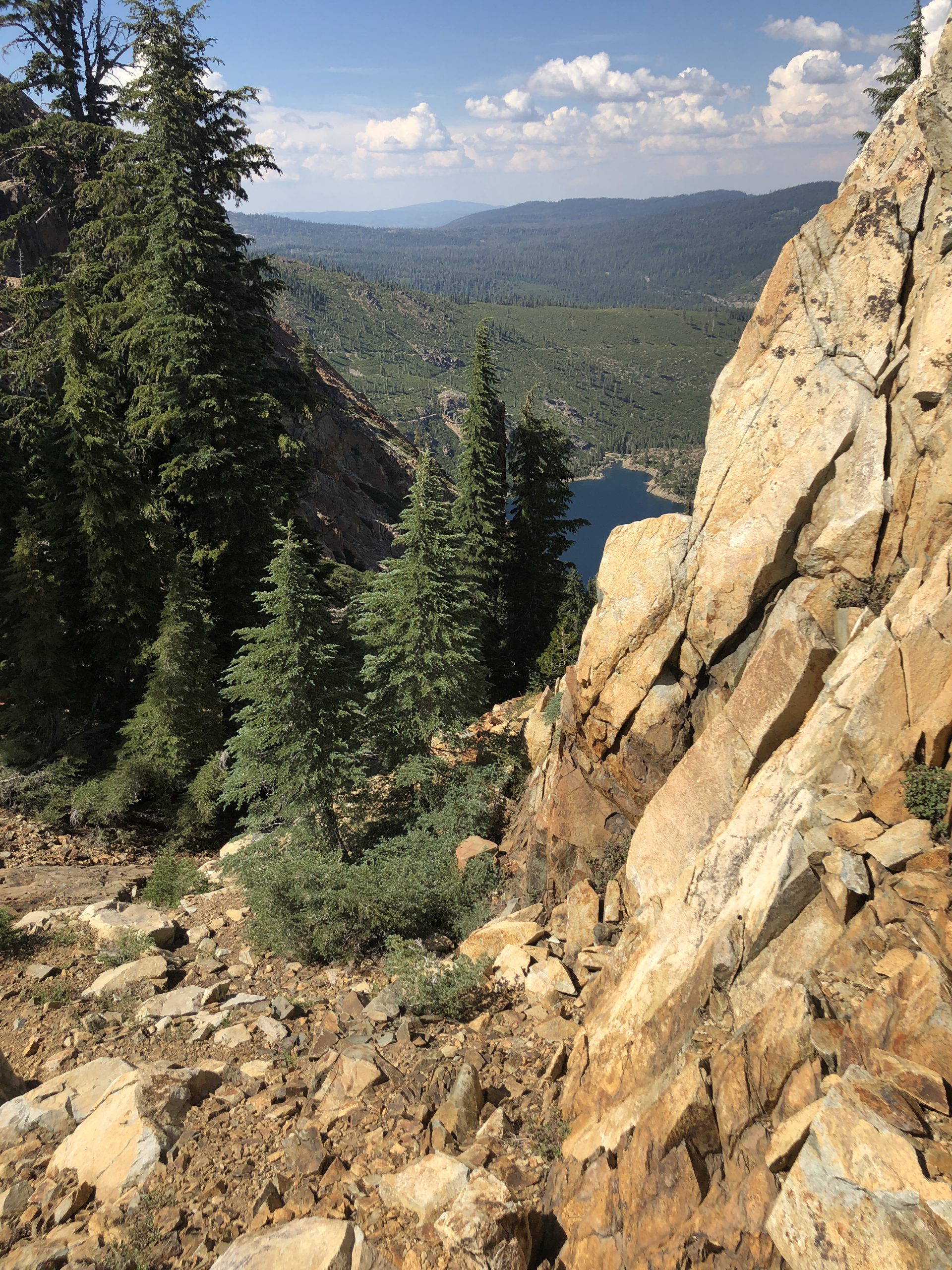
The Sierra Buttes, which include lots of mountain hemlock (Tsuga mertensiana) in their landscape as well as rare species, are a geographical gap in California seed collections that CaPR hopes the legislated funding will allow them to push into. Photo credit: Brett Hall, courtesy of the University of CA, Santa Cruz.
Daniel Gluesenkamp, Ph.D.
If you have a chance to be in Dan Gluesenkamp’s orbit, you will experience someone with a stunning passion for plants. A brilliant orator, he has the ability to paint a vibrant picture of his conservation dreams. Perhaps even more important, he will leave you with a great sense of hope. We feel lucky to have him leading the California Native Plant Society and are pleased to recognize him as our January 2020 Conservation Champion.
When did you first fall in love with plants?
I guess I’ve always been in love with plants; in one of my earliest family photos I’m foraging for milkweed with my dad. I distinctly remember getting thrilled with plants as a 5-year old, learning that I could tear up Tradescantia stems, plant them, and make more plants. Now that is an epiphany moment! I know I fell in love with California native plants when I was an undergrad at the University of California at Santa Cruz. I remember the exact moment, discovering a Calochortus blooming on a road cut, in absolute darkness but for a shaft of light lancing through the redwood canopy that lit up a single ghost-white blossom. That was it for me. I fell in love.
What was your path to becoming executive director of CNPS?
Well, I guess it all started with that blossom! A few weeks later, I randomly found myself in the Santa Cruz Natural History Museum, where the local CNPS chapter was holding a wildflower show. I’d never heard of CNPS, and knew nothing about plants. I found my Calochortus, and names for other plants, and I remember the “aha” moment when someone explained that some were native and some weren’t, some were rare and some were weeds, etc. After college I did fieldwork for a few years, and then got myself into school, determined to become a conservation biologist. After earning my Ph.D. I chose to ditch the academy and spent a decade doing natural lands management, saving places and restoring them. While I loved the local, I also recognized the need for larger-scale work. I did a stint as Executive Director of the Calflora database, and then when the CNPS job came up my wife convinced me that it would be perfect for me. She was right of course! It’s a great organization and I’m thrilled to be able to be part of it.
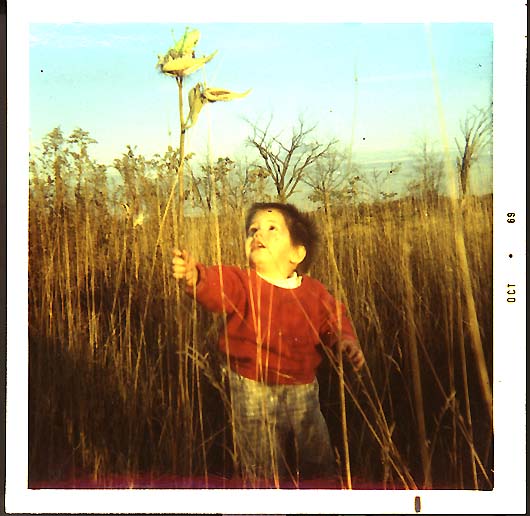
What about working with rare plants has surprised you?
I think the first surprise for me was that rare plants are so common! I’m in California, where we’ve got more plants than any other state, and actually more rare plants than most states even have plants. In California, rare oftentimes means local. A rare plant may only have two or three populations, but it might only have ever had two or three populations for its entire history. This is something that isn’t widely appreciated –rare does not mean it’s on its way to extinction, it mostly just means it is special. Another surprise, kind of a corollary of that, is that these things have incredible life force. We think of a rare species as something very delicate, a weak creature that needs our intervention, all that kind of self-serving hubris. Truth of the matter is, our 2500 rare plants have been hanging on in California far longer than we have, most of them will outlive us and even our species. All they really need from us is to not be bulldozed.
What has been the most challenging aspect of your work?
We have met the enemy and they are us. We need to work together more, faster, more creatively, with planning but also with realization that we have to take risks and have faith that some of our bets will pay off. We’re already doing incredible biodiversity work, but we are disparate and disconnected, a Tower of Babel. We have the opportunity, right now, to do everything we ever dreamed of, and all of society is urging us forward and hoping we succeed. The biggest challenge is for us, the people who can make it all work, to believe that this opportunity is real and work with a fervor commensurate with the need.
What excites you most about the Biodiversity Initiative for California?
I’m excited that the ambitious new California Biodiversity Initiative has the potential to restructure the way we live in California, and in doing so teach the rest of the world. It literally can change everything. Once, wetlands were where you dumped your trash until it was dry enough to build on. A generation ago Americans started fighting to save those places, secured laws to protect them, and ultimately changed public perception so that wetlands are now protected by cultural norms. We are at a moment where we are doing this for biodiversity. With this initiative we are bringing everybody on board, not just to do the science and reform policy and law, not just to show that saving biodiversity is a win-win action that actually grows the economy while increasing resiliency, but to actually update the culture so that future generations all understand biodiversity as sacrosanct and its protection is just assumed. In order to get there we are going to do all of the science that we should have been doing over the last few decades, we’re going to reboot natural history collections, train hundreds of scientists and thousands of para-taxonomists. We’re going to engage all Californians to get the work done and to turn them into champions who share this vision with their families, neighbors, abuelas and bowling buddies.
What new projects or approaches are you most interested in that could help conserve California plants into the future?
This year we are advancing a lot of things, and personally, I am quite excited for the Biodiversity Survey: a decade-long specimen-based survey of California. Over the last century, we have divested from biodiversity work, defunded natural history collections, failed to invest in new taxonomists, and let that key infrastructure deteriorate. Now we are finding that we need it. We have incredibly smart computers that can do great things with data, but we are using data that was collected a century ago. So we are going to update that. It will be an all-hands-on-deck effort, bringing together all of our taxonomists, training more, fixing existing museums and building new ones, and most of all engaging many thousands of Californians who no one ever expected would be conducting cutting-edge biodiversity scientists. At the end of it we will have the information we need, we will have secured the specimens that future generations give thanks for, and we will have nurtured a much larger community of biodiversity champions that looks very different from the smaller community that got us this far.

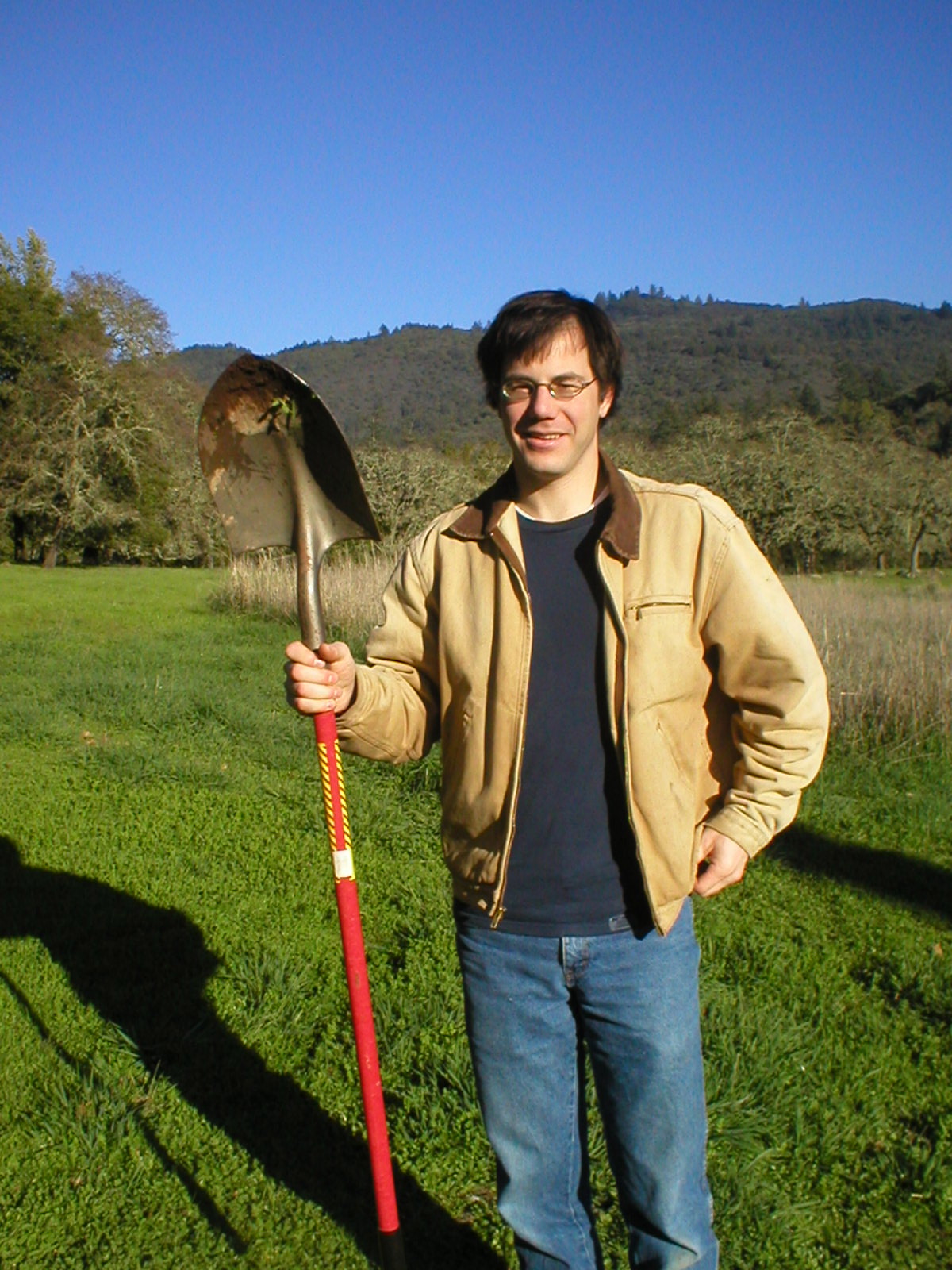
Get Updates
Get the latest news and conservation highlights from the CPC network by signing up for our newsletters.
Sign Up Today!Donate to CPC
Thank you for helping us save plant species facing extinction by making your gift to CPC through our secure donation portal!
Donate Today